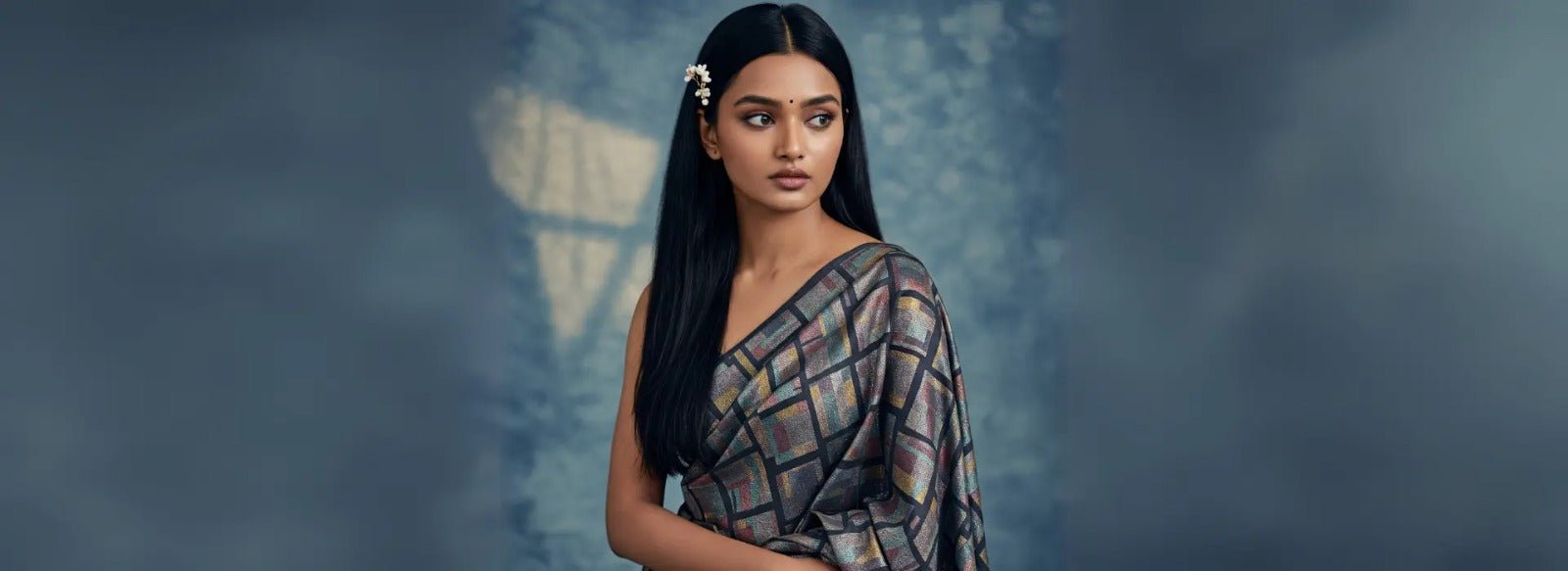Table of Contents
The saree moves through time. It adapts, transforms, and stays relevant. In 2025, saree fashion blends tradition with modern influences. Prints, fabrics, and draping styles evolve, reflecting cultural shifts and contemporary needs.
Revival of Handcrafted Prints
Prints tell stories. In 2025, handcrafted prints will take center stage. Block printing, Kalamkari, and Ajrakh resurface with new interpretations. Artisans bring fresh patterns inspired by nature, architecture, and folklore. Digital prints gain momentum, merging precision with artistry. Minimalist motifs cater to professionals, while bold patterns dominate festive wear.
Sarees with hand-painted details gain attention. Madhubani and Pattachitra's art moves beyond canvases to the fabric. The process is slow, but the results are timeless. Buyers appreciate the craftsmanship and uniqueness of every piece.
Fabric Innovations for Comfort and Style
Fabric choice defines drape, movement, and occasion. In 2025, lightweight and breathable materials gain popularity. Pure cotton remains a summer staple. Linen sarees enter the boardrooms. Mulmul cotton, known for its softness, sees higher demand.
Silk continues to hold prestige. Muga silk from Assam retains its natural sheen. Organza, with its translucent texture, adds a contemporary touch. Chiffon and georgette cater to easy draping. Sustainable options grow in demand. Banana silk, bamboo fiber, and recycled polyester redefine eco-conscious fashion.
Weavers innovate to keep up with changing needs. Sarees with moisture-wicking properties enter the market. Hybrid fabrics blend tradition with technology. Comfort and versatility drive the choices buyers make.
Draping Styles: Tradition Meets Experimentation
Draping evolves with lifestyle changes. Classic styles like Nivi, Bengali, and Coorgi drapes remain relevant. However, experimental drapes gain traction. Belted sarees create structured silhouettes. Cape-style drapes add movement and drama.
Layering has become a trend. Sarees pair with structured blouses, jackets, and shrugs. The dhoti-style drape gains popularity, allowing ease of movement. Half-and-half drapes bring contrast and dimension.
Social media influences styling. Fashion influencers revive forgotten drapes from different regions. Draping workshops and online tutorials make traditional styles accessible to younger audiences.
The Power of Celebrity Influence
Bollywood and regional cinema set trends. Celebrities showcase sarees at film promotions, weddings, and red-carpet events. Deepika Padukone's regal Banarasi sarees, Vidya Balan's love for handlooms, and Rekha's signature Kanjivarams shape preferences.
Fashion designers experiment with saree styling. Pre-draped sarees enter mainstream wardrobes. Fusion sarees blend Western cuts with traditional weaves. The saree, once seen as occasion wear, has become a daily fashion choice.
Occasion-Based Trends
Weddings see a return to traditional craftsmanship. Heavy brocades, zari work, and embroidered sarees dominate bridal selections. Silk and velvet combinations make a statement. Jewel tones remain the preferred colors for wedding sarees.
Office-wear sarees embrace practicality. Monochrome palettes, geometric prints, and lightweight fabrics align with corporate aesthetics. Pre-stitched sarees offer convenience for professionals balancing fashion with function.
Casual wear sarees explore playful elements. Denim sarees, pocketed designs, and ruffled borders have gained popularity. Handwoven cotton sarees with pastel hues create relaxed looks. Fashion-forward consumers experiment with layering sarees over trousers or pairing them with sneakers.
Sustainable and Ethical Choices
Conscious buying rises in importance. Consumers seek transparency in sourcing. Organic dyes, cruelty-free silk, and ethical weaving practices influence decisions. Handloom cooperatives thrive as buyers support direct-from-weaver initiatives.
Upcycling becomes a movement. Old sarees transform into contemporary silhouettes. Vintage weaves gain a second life through repurposing. Buyers value the history embedded in fabrics.
Final Thought : The Saree in 2025 and Beyond
The saree is more than a garment. It carries heritage, identity, and personal expression. The trends of 2025 highlight its adaptability. Whether through revived prints, innovative fabrics, or new draping techniques, the saree continues to evolve.
Browse our collection today and find the perfect saree for every occasion.




